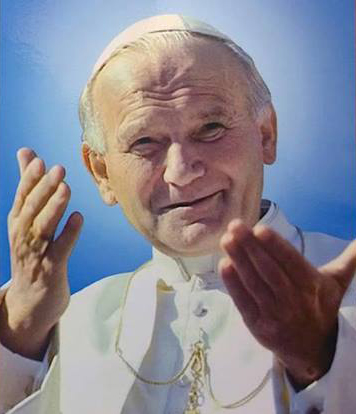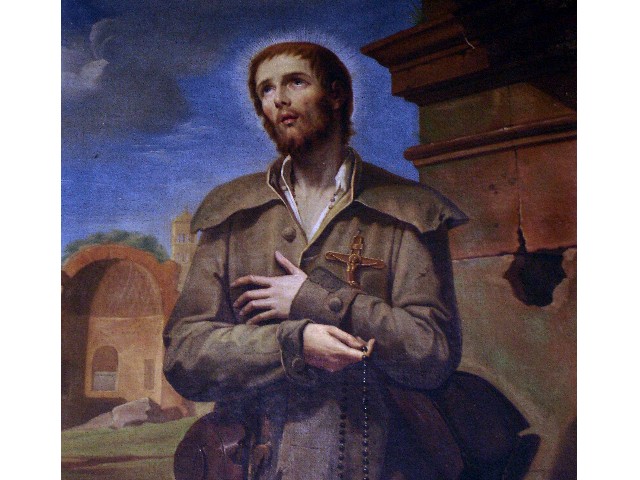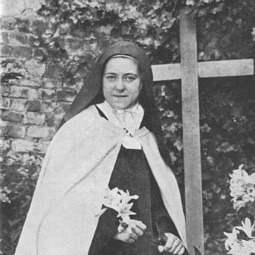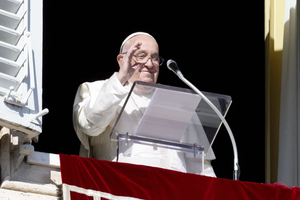Holy Compassion: Saints Show Us How ‘to Suffer With’
All Saints’ Day feature

We’re often reminded that saints are models of holiness. Most had “specialties” at which they excelled. For some, it was compassion.
The dictionary defines compassion as “sympathetic consciousness of others’ distress together with a desire to alleviate it.” Father Brian Kolodiejchuk of the Missionaries of Charity Fathers and postulator of St. Teresa of Calcutta’s canonization cause points out “compassion” comes from the Latin meaning “to suffer with.”
Mother Teresa served the poor by living among the poor, to be able to say, “Look, we live like you too,” explained Father Kolodiejchuk.
“Mother Teresa excelled in faith because she had to live and serve and be an apostle of joy,” her postulator said, showing that compassion needs to include a smile. Father Kolodiejchuk said, “That’s also how we can ‘suffer with.’”
He shared the time Mother Teresa noticed a sad-looking woman in a crowd. Mother Teresa made her way to her and said, “Hello, I’m Mother Teresa. Here’s my business card” (which had only her name and a favorite quote of hers: “The fruit of silence is prayer. The fruit of prayer is faith. The fruit of faith is love. The fruit of love is service”).
Later, one of the sisters who was with Mother Teresa wrote in a testimony about how she “looked back and noticed the smile on the lady’s face,” said Father Kolodiejchuk.
As Mother Teresa said, “Calcuttas are everywhere, if only we have eyes to see. … Let there be kindness in your face, in your eyes, in your smile, in the warmth of your greeting. Always have a cheerful smile. Don’t only give your care, but give your heart, as well.”
Mother Teresa’s contemporary, St. John Paul II, is another compassionate example. “One of the most powerful saints who showed compassion in his life and is not [always] remembered for that is St. John Paul II,” said Father Carlos Martins of the Companions of the Cross, who serves as director of the Treasures of the Church, a ministry evangelizing through the relics of the saints. The Church will mark All Saints’ Day Nov. 1.

John Paul II had a daily luncheon with a variety of guests, whether youth or visitors from developing countries. “He made himself available and recognized the value of his place in the faith life of the masses,” said Father Martins, who related a touching example of his compassion. A homeless man told a monsignor he met on the street that he went to seminary with John Paul II. The monsignor told the Pope about this meeting. The Holy Father asked the man’s name and said he wanted to see him.
“Sure enough, he had been in the seminary with the Pope, was ordained a priest, left the priesthood, lived with a woman and was no longer with her, and eventually found himself on the streets in Rome,” Father Martins related. “John Paul II talked to him and reminisced.” Then, to the man’s surprise, the Pope asked him to hear his confession. He said, “Holy Father, I don’t have faculties.” John Paul II granted him the needed faculties and then guided him through the formula for absolution. The man returned to the priesthood, reinstated by the Pope, who gave him the commission to work with the street people in Rome.
Another favorite “compassionate saint” of Father Martins is St. Benedict Joseph Labre. From a well-to-do family in 18th-century France, he was fairly well read and especially devoted to the Scriptures. He wanted to be a priest, but his diocese wouldn’t have him. Neither would religious communities.

“He would be diagnosed today with mental illness,” pointed out Father Martins.
But “he was profoundly kind, especially to street people and vagabonds,” said Father Martins. “He begged for his food and would share everything. He wandered from shrine to shrine. Kids threw rocks at him. He slept in cemeteries; then in the ruins in the Colosseum, the only place where he was not harassed. But he had great tenderness for the homeless, and there are many accounts of God granting him the grace of multiplication of food when he asked for it — never for himself, but always for others.”
St. Benedict Joseph Labre’s compassionate example lives on today in the Labre Project on college campuses, including at Wayne State Catholic Newman Center in Detroit. Last year, two students started the ministry after being inspired by the Labre Project at John Carroll University in Ohio, where the project was launched 12-plus years ago. Students cook food, pray and take meals and other items as a group to the local homeless community.
“The food is the excuse for being with the people,” explained Newman chaplain Father John Fletcher of the Companions of the Cross. “There are other street ministries that hand out food, toiletries and clothing, but this group is different because they want to form a relationship with the people.”
Father Fletcher related how one man was touched by this witness: “I thought college students come to do their service deed for the month and that’s it. You’re different. You want to know us.”

Such compassionate opportunities abound. Addressing bishops from California, Nevada and Hawaii in 1998, St. John Paul II said, “The sickness of a family member, friend or neighbor is a call to Christians to demonstrate true compassion, that gentle and persevering sharing in another’s pain. Likewise, the handicapped and those who are ill must never feel that they are a burden; they are persons being visited by the Lord.”
Joseph Pronechen is a
Register staff writer.
- Keywords:
- all saints' day
- compassion
- joseph pronechen
- saints
















